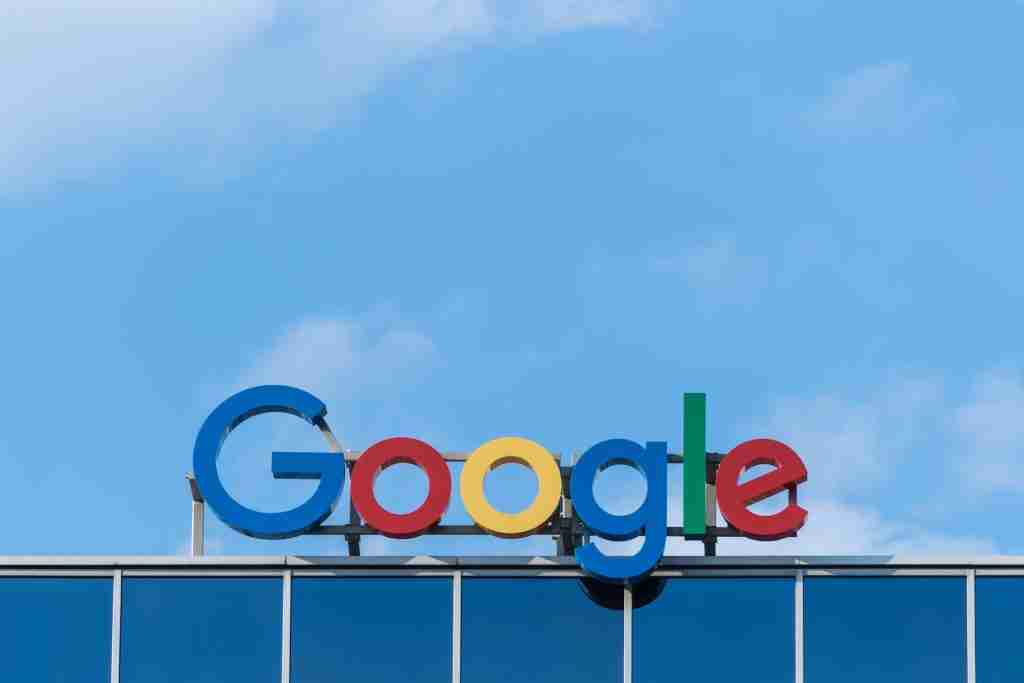27 Fun Facts About The Internet: Beyond Everyday Clicks
1. Robert E. Kahn and Vinton G. Cerf, often known as the ‘Fathers of the Internet.
Dr. Robert E. Kahn and Dr. Vinton G. Cerf are often hailed as the Fathers of the Internet. Their monumental contribution came in the form of the Transmission Control Protocol/Internet Protocol (TCP/IP), which is the fundamental communication protocol used for transmitting data over the Internet.
Thanks to their pioneering work, today, you can effortlessly connect with people and information from around the world at just the touch of a button. Imagine the power in your hands.
2. The U.S. Department of Defense originally developed the internet which was called ARPANET.
The internet, as we know it today, originated from a military project. It was the U.S. Department of Defense that first developed ARPANET (Advanced Research Projects Agency Network) in the late 1960s.
Can you believe that this military initiative was the bedrock that our global web of information was built on? From an instrument of defense to becoming a tool of knowledge and connection, the internet’s transformation is indeed a powerful testament to human innovation.
3. The first website ever created is still online. It was made by Tim Berners-Lee in 1991.
One of the fun facts about the internet is that the first-ever website is still active and you can visit it at http://info.cern.ch. It was created by none other than Tim Berners-Lee in 1991.
It’s like a living piece of history, right there on your screen. Reflect for a moment on how far we’ve journeyed in the digital world since that first humble page was published.
4. The first registered domain was Symbolics.com, purchased on March 15, 1985.

Symbolics.com holds the distinct honor of being the first domain name ever registered, with the registration taking place on March 15, 1985.
It’s fascinating to think that this was the starting point for the explosion of domain names we see today. From one single domain to hundreds of millions it’s quite a leap, a testament to the incredible pace of digital growth.
5. Internet users send an average of 500 million tweets per day.
On an average day, internet users send out 500 million tweets. This reflects the power and reach of social media in our world today.
Every second, thousands of thoughts, opinions, news, and personal moments are shared on Twitter, creating a dynamic and instantaneous global conversation that never sleeps.
6. More than 5.18 billion people use the internet worldwide.
With over 5.18 billion people accessing the internet, more than half the world’s population is now connected online. This vast digital network has transformed how we learn, work, communicate, and entertain ourselves.
It’s a clear sign of our digital age, where boundaries are blurred, and global connections are just a click away.
7. The first webcam was used at the University of Cambridge to monitor a coffee pot in the computer lab.
The very first webcam had a simple, practical purpose to monitor a coffee pot in the computer lab at the University of Cambridge.
This rudimentary use was a far cry from the myriad applications of webcams today, which range from video conferencing to live streaming, showing how even the simplest innovations can pave the way for widespread change in how we use technology, which is one of the fun facts about the internet.
8. The internet weighs less than 2 ounces, due to the weight of all the moving electrons that make up the data.
Despite the vastness of its information and impact, the physical weight of the internet is surprisingly light. It’s estimated to weigh less than two ounces.
This calculation stems from the understanding that the weight of the internet comes from the countless electrons in motion, enabling the transmission of data across its sprawling networks.
9. As of 2021, Google has indexed just 4% of the content available on the internet.
Surprisingly, as of 2021, Google, the largest search engine in the world, has indexed only 4% of the internet’s available content. This statistic underscores the vastness of the digital universe.
The majority of the internet, often referred to as the deep web or invisible web, remains largely unexplored, hinting at the limitless possibilities and untapped potential that still exist in our connected world.
10. The busiest time for internet usage is between 7 PM and 11 PM in local time zones.
The period from 7 PM to 11 PM in local time zones marks the busiest hours for internet usage. As workdays end and leisure time begins, digital activity spikes.
From streaming shows to browsing social media, these hours illuminate our collective routine, reflecting our reliance on the internet not just for work, but for relaxation and entertainment as well.
11. Over 60 billion emails are sent daily, but 97% are spam.
One of the fun facts about the internet is that with over 60 billion emails sent every day, it’s hard to imagine that the first one was sent in 1971 by Ray Tomlinson to himself. Yet, not all these emails are legitimate.
Astoundingly, about 97% of them are categorized as spam. This data illustrates both the evolution of digital communication since Tomlinson’s groundbreaking email and the challenges of digital security in our current, interconnected era.
12. The most expensive domain name ever sold was Las Vegas.com for $90 million in 2005.

The digital gold rush of domain names hit its peak when LasVegas.com was sold for an eye-popping $90 million in 2005.
This record-breaking deal underscores the immense value of digital real estate, specifically domain names.
13. Around 175 new websites are created every minute worldwide.
The digital landscape is constantly expanding with approximately 175 new websites springing into existence every minute worldwide.
This astonishing rate of growth encapsulates the vitality of the online world, where businesses, individuals, and organizations continuously carve out their own spaces.
14. In 2020, the amount of data on the internet reached approximately 64 zettabytes.
The year 2020 marked a significant milestone in the digital world as the volume of data on the internet soared to an astounding 64 zettabytes, roughly equivalent to a trillion gigabytes.
This mind-boggling accumulation of information stands as a testament to the digital age’s rapid advancement.
15. The first photo posted on the internet was of an all-female parody pop group, Les Horribles Cernettes, in 1992.
The first photograph ever posted on the internet was quite a unique choice – it was of Les Horribles Cernettes, an all-female parody pop group, and this event happened in 1992.
This inaugural image paved the way for the internet to become the central hub of visual culture that it is today, which is one of the fun facts about the Internet.
16. The first internet banner ad was launched in 1994 by AT&T on HotWired.com.

The digital era of advertising dawned in 1994 when AT&T debuted the first internet banner ad on HotWired.com.
This pioneering step, though modest at the time, would eventually revolutionize the world of advertising, ushering in an era where digital ads would become ubiquitous in our online experiences.
17. Over 30% of the world’s computers are infected with some type of malware.
A sobering reality of our digital age is that over 30% of the world’s computers are infected with some form of malware.
This high percentage underscores the ongoing challenge of maintaining digital security amidst evolving cyber threats.
18. The fastest internet speed recorded was 319 terabits per second, set by a team in Japan in 2021.
In an impressive display of technological progress, a team in Japan set a new world record in 2021 with an internet speed of 319 terabits per second.
This mind-blowing speed, previously unimaginable, not only showcases the relentless pace of technological advancement but also foretells a future where such ultra-high-speed connections could become the norm, transforming the way we interact with digital technology.
19. Every minute, 500 hours of video in every minute are uploaded to YouTube.
YouTube, the world’s largest video platform, experiences an influx of 500 hours of video every single minute.
This staggering volume of content epitomizes our digital age’s insatiable appetite for multimedia content. It illustrates the enormous scale of information exchange on the internet and underscores YouTube’s role as a key platform for this global sharing of ideas.
20. Google is actually a misspelling of googol, a term that represents a 1 followed by 100 zeros.

One of the fun facts about the internet is that the tech giant we know as Google actually owes its name to a spelling mistake. “Googol,” the term for a 1 followed by 100 zeros, became “Google” due to a misspelling.
This name aptly encapsulates the company’s mission to organize the immense amount of information available on the internet, symbolizing the virtually limitless possibilities of the digital world.
21. The internet requires 50 million horsepower in electricity to keep running in its current state.
The internet, our planet’s global information superhighway, is an energy-hungry entity. It requires an enormous 50 million horsepower in electricity to sustain its current operations.
This startling fact underscores the magnitude of the digital infrastructure powering our daily lives. It reminds us of the vast energy resources needed to maintain the ceaseless flow of data across the world.
22. One of the fun facts about the internet is that more than 4.48 billion people use social media.
Social media is incredibly popular. With more than 4.48 billion people using it, it’s become a standard part of life for over half the world’s population.
This shows just how much we all rely on these platforms for chatting, sharing news, and staying connected with each other.
23. There are more than 1.11 billion websites, but most are inactive.
While over 1.11 billion websites populate the digital cosmos, most are inactive, resembling deserted digital real estate.
They’re often forgotten personal blogs, one-time projects, or abandoned business pages. Conversely, a vibrant minority shapes the active web, driving traffic and global discourse.
24. Amazon was initially called Cadabra.

Jeff Bezos initially named his company Cadabra, hinting at magic. However, due to the unfortunate phonetic resemblance to cadavers, especially over the phone, as pointed out by the first company lawyer, Todd Tarbert, Bezos changed it.
He chose Amazon, symbolizing vastness and diversity like the Amazon River.
25. The first online transaction ever was by Stanford students buying marijuana from MIT students.
The first-ever online buy was quite unusual. Students from Stanford used an early version of the internet, called ARPANET, to buy marijuana from students at MIT. This marked the start of buying and selling things online.
Today, the internet is used to sell everything, from food to books, showing just how much things have changed since that first purchase.
26. Approximately 1.7 megabytes of data is created every second for every person on Earth.
We’re living in an era of rapid data production, with about 1.7 megabytes of data generated every second for each person on the planet.
This information avalanche, spurred by internet use, social media interaction, business transactions, and more, continuously feed the ever-growing digital universe.
It highlights our profound dependency on data and how it shapes our lives, from personalized marketing to improved healthcare.
27. A single Google search uses about 1 kJ of energy, which is enough to lift a laptop 1 meter off the ground.
The act of conducting a Google search, a seemingly insignificant task, actually utilizes about 1 kilojoule (kJ) of energy.
To put this into perspective, that’s sufficient energy to hoist a laptop one meter off the ground. Behind every search query, there lies a complex infrastructure of data centers and servers working in concert, consuming energy, which is one of the fun facts about the internet.
FAQs
The Internet is a global network of interconnected computers and servers that communicate with each other using standardized protocols. It enables the sharing and exchange of information and data, such as emails, documents, images, and web pages. Services like browsing websites, online gaming, social media, and video streaming all function through the internet.
Google was invented by Larry Page and Sergey Brin while they were Ph.D. students at Stanford University. The project started as an academic research initiative in 1996, with the duo aiming to create a search engine that ranked results based on their relevance to the search query. The company, Google Inc., was officially incorporated on September 4, 1998, in a friend’s garage in Menlo Park, California.
The United States hosts the most websites by a significant margin, which is one of the fun facts about the internet. This is due to several factors including the early adoption of internet technology in the US, the presence of major tech companies like Google, Amazon, and Facebook, and the prevalence of data centers. Additionally, most global websites use the .com domain, which is originally a top-level domain for the United States.
Google.com is the biggest and most visited website globally. Google serves as the internet’s most used search engine, helping users find information, websites, images, videos, and more. In addition to its search engine, Google offers a multitude of services and platforms, including email (Gmail), cloud storage (Google Drive), video sharing (YouTube), and more, further increasing its web traffic. However, the landscape of the internet can change rapidly, so it’s a good idea to look at recent data for the most current information.
The www stands for World Wide Web, which is a system of interlinked, hypertext documents accessed through the internet. It was created in 1989 by British computer scientist Tim Berners-Lee and is now used by billions of people to access information, communicate, conduct business, and more. The Web uses HTTP (Hypertext Transfer Protocol) as the primary protocol for transmitting information, and this information is viewed using a web browser, like Google Chrome or Mozilla Firefox.







